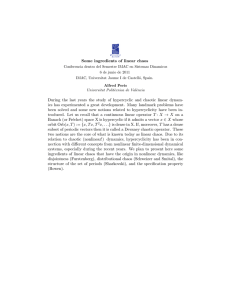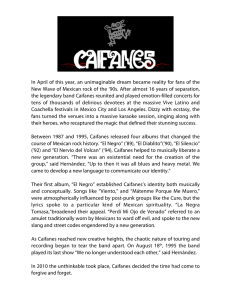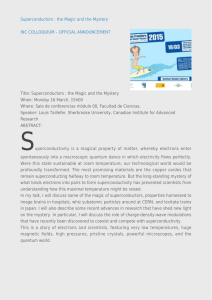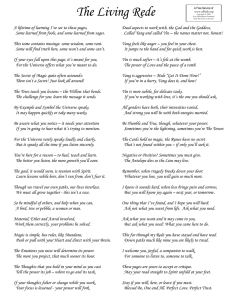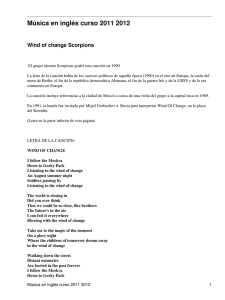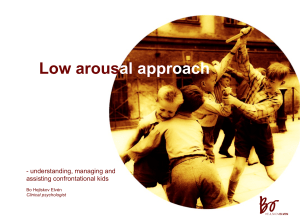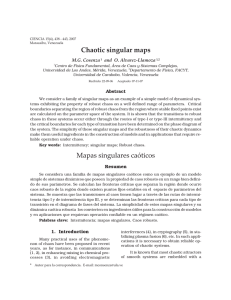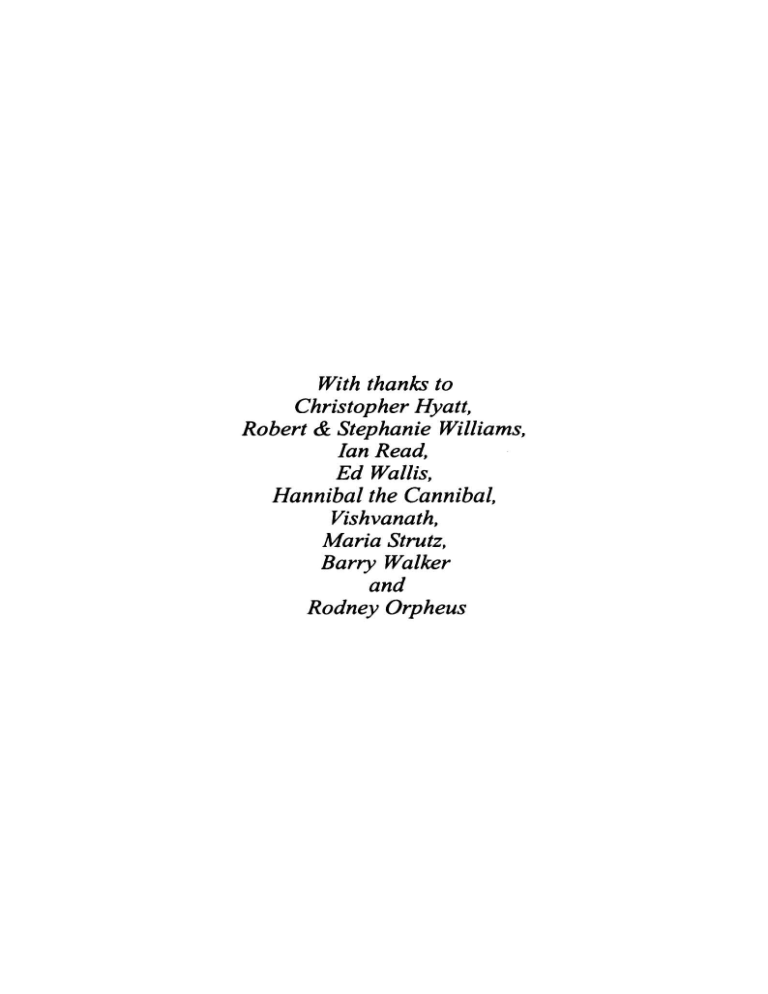
With thanks to Christopher Hyatt, Robert & Stephanie Williams, Ian Read, Ed Wallis, Hannibal the Cannibal, Vishvanath, Maria Strutz, Barry Walker and Rodney Orpheus Table of Contents Foreword Bv Pere Carroll ..... ... ...... ..... .... ....... ...... .... ...... ......... 9 Chapter One Is Chaos Magid! .................................................. 11 Chapter Two Magid In The Material World ............................. 26 Chapter Three Becoming A Magician ....................... .. ........... ... .... 39 Chapter Four Another Crack In The Wall ... .... ... ..... ... .... ....... .. .... 58 Chapter Fi ve Playillg Wirh Chaos .. .... ...... .... ..... ........ ....... ...... ... . 80 Chapter Six Chaos Servitors ..... .... .. .. ............. .. .......... ... ... ... .. .. 105 Chapter Seven Ego Magick ......................................................... 125 Chapter Eight Kali III The Disco ................................................ 143 Chapter Nine Conquering Demons ...... ... ................... ...... .. ....... 160 Chapter Ten Are You Illuminated! ........ ................ .................. 176 Further Reading ..... ................................... ................ .. ..... 191 Foreword by Pete Carroll The paradigm shift now occurring at the cutting edge of magic has many roots. The symbolic syncretism of the Golden Dawn a century ago, which fused renaissance Hermeticism with oriental esoterics drawn from the European imperial experience, only fully flowered when Aleister Crowley added a battery of gnostic power techniques culled from diverse cultural sources . Then along came Austin Spare, who identified the basic sleight of mind techniques underlying all forms of magic , and showed us that we could treat the whole baroque symboli sm of magic as entirely optional. Spare invented the Postmodernist approach to magic well before the cultural advent of Existentialism or Postmodernism . The theories of Special and General Relativity added little to esoteric theory although the idea of cultural relativism manifested in syncretic occultism long before it found general social acceptance. However, that other main pillar of twentieth century science, Quantum Physics, provides enormous support for many areas of metaphysical theory and, indeed, suggests considerable scope for its extension. So far, only Chaos Magic seems to have welcomed it on board . Shortly after the launch of the Chaos Magic paradigm, Chaos Mathematics developed from Catastrophe Theory and confirmed the Chaoist hypothesis that some mechanism must exit to scale up subatomic indeterminacy into the macroscopic world of our experience. So much of what magicians have taken for granted this century stems from the work of the Golden Dawn and Aleister Crowley. Much of what will constitute standard magical theory and practice in the next century will derive from the state-of-theart ideas and techniques currently under development in Chaos Magic . This book , by..a rising star of the new tradition, represents an outstanding contribution to the revolution now occurring. 9 CHAPTER ONE IS CHAOS MAGIC? WHAT IS MAGIC? The world is magical; we might get a sense of this after climbing a mountain and looking down upon the landscape below, or in the quiet satisfaction at the end of one of those days when everything has gone right for us. Magic is a doorway through which we step into mystery, wildness, and immanence. We live in a world subject to extensive and seemingly, all-embracing systems of social and personal control that continually feed us the lie that we are each alone, helpless, and powerless to effect change. Magic is about change. Changing your circumstances so that you strive to live according to a developing sense of personal responsibility; that you can effect change around you if you choose; that we are not helpless cogs in some clockwork universe. All acts of personal/collective liberation are magical acts. Magic leads us into exhilaration and ecstasy; into insight and understanding; into changing ourselves and the world in which we participate. Through magic we may come to explore the possibilities of freedom. Surely this is simple enough? But no, magic has become obfuscated under a weight of words, a welter of technical terms which exclude the uninitiated and serve those who are eager for a 'scientific' jargon with which to legitimise their enterprise into something self-important and pompous. Abstract spiritual spaces have been created in the midst of which tower the Babel-like Lego constructions of 'inner planes', spiritual hierarchies and 'occult truths' which forget that the world around us is magical. The mysterious has been misplaced. We search through dead languages and tom~s for 'secret knowledge', ignoring the mystery of life that is all around us. So for the moment, forget what you've read about spiritual enlightenment, becoming a 99th 11 12 Phil Hine level Magus and impressing your friends with high-flown gobbledygook. Magic is surprisingly simple. What can it offer? 1. A means to disentangle yourself from the attitudes and restrictions you were brought up with and which define the limits of what you may become. 2. Ways to examine your life to look for, understand and modify behavior, emotional and thought patterns which hinder learning and growth. 3. Increase of confidence and personal charisma. 4. A widening of your perception of just what is possible, once you set heart and mind on it. 5. To develop personal abilities, skills and perceptions-the more we see the world, the more we appreciate that it is alive. 6. To have fun. Magic should be enjoyed. 7. To bring about change-in accordance with will. Magic can do all this, and more. It is an approach to life which begins at the most basic premises-what do I need to survive?-how do I want to live?-who do I want to be?-and then gives a set of conceptual weapons and techniques for achieving those aims. WHAT IS CHAOS MAGIC? What do you think of when you hear the word "Chaos?" - "A state of things in which chance is supreme" - "An unorganised state of primordial matter before the creation" - "A confused state or mass" - "Chaos was the primal source, first of all" - "This isn't anarchy, this is Chaos" - "In the beginning, there was only Chaos" - "Agents of Chaos cast burning glances at anything or anyone capable of bearing witness to their condition ... .. - "One must have Chaos in one to give birth to a dancing star" - "Matter is illusion, solidity is illusion, we are illusion. Only Chaos is real" - "In the limitless heavens, shines the countenance of Chaos" Chaos is all this and more. A term which means something different for everyone, none of us can ignore Chaos. Over the Condensed Chaos 13 last twenty years or so, Chaos has become the buzzword of a revolution in thought and method, spawning a new form of science, new technologies; a whole new emerging world-view. While Chaos Theory has been generating debate within the scientific community, Chaos Magic has been creating controversy within occult circles. It has been labeled variously as "English Thelema", "the blackest fonn of dark power" and "git 'ard magic". At the core of this revolution is the recognition that the scientific world-view which has set the limitations of acknowl edged human experience is crumbling, that new visions and models are required, as are new ways of being, and more importantly, new ways of doing. Chaos Magic is a new approach to "doing" magic. CORE PRINCIPLES OF CHAOS MAGIC While magical systems usually base themselves around a model or map of the spirituaVphysical universe, such as the Tree of Life (which can sometimes be described as a Cosmic Filofax), Chaos Magic is based on a very few 'Core Principles' which generally underlie its approach to magic (they are not universal axioms however, so feel free to swap 'em around). I. The Avoidance oj Dogmatism. Chaos Magicians strive to avoid falling into dogmatism (unless expressing dogmatism is part of a temporary belief system they have entered). Discordians use 'Catmas' such as "Us Discordians must stick apart!" Thus Chaos Magicians feel entitled to change their minds, contradict themselves and come up with arguments that are alternatively plausible and implausible. It has been pointed out that we invest a lot of time and energy in being right. What's wrong with being wrong occasionally? 2. Personal Experience is paramount. In other words, don't take my word that such-and-such is the case, check it out for yourself. Magic has suffered extensively from 'armchair theorists' who have perpetuated myths and out-of-date information purely due to laziness of one kind or another. Sometimes it's interesting to ask awkward questions just to see what the selfappointed experts come out with. Some will emit a stream of verbal diarrhea rather than admit to not knowing the answer, whereas a true adept will probably say "I haven't a f*****g clue." Quite early on, Chaos Magicians came to the startling 14 Phil Hine discovery that once you strip away the layers of dogma, personal beliefs, attitudes and anecdotes around any particular technique of practical magic, it can be quite simply described. 3. Technical Excellence. One of the early misconceptions about Chaos Magic was that it gave practitioners carte blanche to do whatever they liked, and so become sloppy (or worse, soggy) in their attitudes to self-assessment, analysis, etc. Not so. The Chaos approach has always advocated rigorous self-assessment and analysis, emphasised practice at what techniques you're experimenting with until you get the results that you desire. Learning to 'do' magic requires that you develop a set of skills and abilities and if you're going to get involved in all this weird stuff, why not do it to the best of your ability? 4. Deconditioning. The Chaos paradigm proposes that one of the primary tasks of the aspiring magician is to thoroughly decondition hirself from the mesh of beliefs, attitudes and fictions about self, society, and the world. Our ego is a fiction of stable self-hood which maintains itself by perpetuating the distinctions of 'what I am/what I am not, what I like/what I don't like', beliefs about ones politics, religion, gender preference, degree of free will, race, subculture etc. all help maintain a stable sense of self, while the little ways in which we pull against this very stability allows us to feel as though we are unique individuals. Using deconditioning exercises, we can start to widen the cracks in our consensual reality which hopefully, enables us to become less attached to our beliefs and egofictions, and thus able to discard or modify them when appropriate. S. Diverse Approaches. As mentioned earlier, 'traditional' approaches to magic involve choosing one particular system and sticking to it. The Chaos perspective, if nothing else, encourages an eclectic approach to development, and Chaos Magicians are free to choose from any available magical system, themes from literature, television, religions, cults, parapsychology, etc. This approach means that if you approach two Chaos Magicians and ask 'em what they're doing at anyone moment, you're rarely likely to find much of a consensus of approach. This makes Chaos difficult to pin down as one thing or another, which again tends to worry those who need approaches to magic to be neatly labeled and clear. Condensed Chaos 15 6. Gnosis. One of the keys to magical ability is the ability to enter Altered States of Consciousness at will. We tend to draw a distinct line between 'ordinary consciousness' and 'altered states', where in fact we move between different states of consciousness-such as daydreams, 'autopilot' (where we carry out actions without cognition) and varying degrees of attention, all the time. However, as far as magic is concerned, the willed entry into intense altered states can be divided into two poles of 'Physiological Gnosis'-Inhibitory states, and Excitatory states. The former includes physically 'passive' techniques such as meditation, yoga, scrying, contemplation and sensory deprivation while the latter includes chanting, drumming, dance, emotional and sexual arousal. A BRIEF HISTORY OF CHAOS The Chaos Magic movement had its first stirrings in the late nineteen seventies, in England. While the new phenomena of punk rock was grabbing the newspaper headlines, and scientists across the world were beginning to delve into the mysterious mathematical world of fractals and non-linear dynamics, a new approach to magical practice was being synthesized in the wilds of West Yorkshire. At the time, English occultism was very much dominated by the three strands of popular Witchcraft, Western Qabalah, and Thelema. At least, there were enough people interested in these approaches to spawn supporting magazines. In one such magazine, The New Equinox, there appeared the early writings of Peter J. Carroll, who is considered the foremost exponent of modem Chaos Magic. By 1978, there appeared the first advertisements for the "Illuminates of Thanateros", an order who's practices were composed of a blend of shamanism, Taoism, Tantra and Thelema. The announcement of this new order was shortly followed by the first edition of Peter Carroll's Liber Null, which while describing the basic philosophy and practical approaches, did not contain the term 'Chaos Magic'. Liber Null was closely followed by The Book of Results by Ray Sherwin, which lucidly explained Austin Osman Spare's great magical innovation-sigil magic. Austin Osman Spare is considered by many to be the "grandfather" of Chaos Magic. An obscure figure, brought to light by the work of Kenneth Grant, Spare was a superb magical artist, sorcerer, and 16 Phil Hine spiritualist. At a time when many of his contemporaries sneered at table-tapping and contacting 'spirit guides' in favour of elaborate Rosicrucian ceremonies, Spare was painting the spirits he was in contact with, and using his own system of 'sentient letters' -sigils-to manifest his desires. Spare was not particularly enamoured of the Golden Dawn-style approach to magic, and makes some very acid comments on the 'subject in The Book ofPleasure (1913). The Book of Pleasure (subtitled: The Psychology of Ecstasy) contains the essentials of Spare's magical philosophy, and the key techniques with which he applied it. It is not an easy book to read, and Spare is often referred to as an "incomprehensible mystic." His vocabulary is wide, his use of grammar is strange, and he uses many terms in ways that give them a different meaning from their usual context. Nor was he attempting to write in a "textbook" style that modern readers are used to, and The Book of Pleasure is very stylistically reminiscent of an old Grimoire before it has been tidied up. Fortunately, The Book of Results gave a very clear exposition of sigil magic, and Liber Null also dealt with Spare's concept of the alphabet of desire. Another powerful influence of the development of Chaos Magic was the work of Aleister Crowley. Crowley synthesised a magical world-view-a psychocosm-out of his studies in magical and esoteric fields such as the Golden Dawn, Yoga, Alchemy, Kabalah, and from his experience in other disciplines. Moreover, it is Crowley's life, rather than his voluminous magical and mystical writings that is of interest. Crowley took his personal experience, magical and otherwise, and created his own enclave, beyond the boundaries of conventional morality. He deliberately sought extremes of experience, concealing, and at the same time, revealing himself through a series of colourful personalities. Part of Crowley's attraction for the modern magician is that he created something which has enduring power-a psychocosm which continues to be developed and twisted into different forms. Crowley did not so much 'follow' a tradition, he embodied a dynamic process of reality engagement-creating his own path from whatever he happened to find in front of him. The early growth of Chaos Magic was characterised by a loose network of informal groups who came together to Condensed Chaos 17 experiment with the possibil ities of the new current. With the demise of The New Equinox, the 'chaos kids' reported their results and heresies in the pages of a new British Occult magazine, The Lamp of Thoth. The early Chaos books were joined by two tapes 'The Chaos Concept' which discussed the basics of Chaos Magic, and 'The Chaochamber', a sciencefiction Pathworking which combined elements of Star Trek, Michael Moorcock, and H. G. Wells. The Sorcerer's Apprentice Press then re-released Liber Null and The Book of Results, as well as Pete Carroll's Psychonaut. These, together with articles from the growing Chaos corpus in The Lamp of Thoth , drew more people into experimenting with the new approach. Thanks to the efforts of Ralph Tegtmeier, the Chaos approach was also receiving attention in continental Europe. The simple message of Chaos Magic is that, what is fundamental to magic is the actual doing of it-that like sex, no amount of theorising and intellectualisation can substitute for the actual experience. Carroll's Liber Null , therefore, presented the bare bones of the magical techniques which can be employed to bring about change in one's circumstances. Liber Null concentrated on techniques, saying that the actual methods of magic are basically shared by the different systems, despite the differing symbols, beliefs and dogmas. What symbol systems you wish to employ is a matter of choice, and that the webs of belief which surround them are means to an end, rather than ends in themselves (more on this later). An important influence on the development of Chaos Magic was the writing of Robert Anton Wilson and Company, particularly the Discordian Society who revered Eris, the Greek goddess of Chaos. The Discordians pointed out that humour, clowning about and generallight-heartedness was conspicuously absent from magic , which had a tendency to become very 'serious and self-important'. There was (and to a certain extent remains) a tendency for occultists to think of themselves as an initiated 'elite' compared to the rest of humanity. The Discordian Society is, in its ..own words " .. . a tribe of philosophers, theologians, magicians, scientists, artists, clowns, and similar maniacs who are intrigued with ERIS GODDESS OF CONFUSION and with Her doings." The existence of the Discordian Society was first popularised in Robert Anton Wilson 18 Phil Hine and Robert Shea's blockbusting Illuminatus! trilogy, and also in Malaclypse The Younger's book Principia Discordia which ,sets out the basic principles of the Discordian Religion-a religion based around the Greek Goddess, Eris. Traditionally, Eris was a daughter of No x (night) and the wife of Chronus. She beg at a whole bunch of Gods-Sorrow, Forgetfulness, Hunger, Disease, Combat, Murder, Lies-nice kids! The ancient Greeks attributed any kind of upset or discord to her. With the fall of the ancient empires, Eris disappeared, though it is suspected that she had a hand in 'manifesting' the first bureaucracies, triplicate forms, and insurance companies. She didn't put in a personal appearance again on spaceship Gaia again until the late 1950's, when she appeared to two young Californians, who later became known as Omar Ravenhurst and Malaclypse The Younger. Eris appointed them the "Keepers of the Sacred Chao" and gave them the message to: "Tell constricted mankind that there are no rules, unless they choose to invent rules." After which Omar and Mal appointed each other High Priest of his own madness, and declared themselves each to be a Society of Discordia, whatever that may be. Eris has since climbed her way from historical footnote to mythic mega-star, and the Discordian Movement, if such a thing can be said to exist, is growing on both sides of the Atlantic, helped by the Discordian tactic of declaring that everyone is a genuine Pope. More people are getting into the idea of a religion based on the celebration of confusion and madness. The central Greek myth that Eris figures prominently in is the ever-continuing soap opera of 'Mount Olympus-Home of the Gods'; the episode which inadvertently brought about the Trojan War. It seems that Zeus was throwing a party and did not want to invite Eris because of her reputation as a trouble-maker. Infuriated by the snub, Eris fashioned a golden apple inscribed with the word Kallisti, ("to the prettiest one") and tossed it into the hall where all the guests were. Three of the invited Goddesses, Athena, Hera, and Aphrodite, each claimed the apple for themselves and started fighting and throwing food around. To settle the dispute, Zeus ordered all three to submit to the judgement of a mortal over just who was 'the prettiest one', and said mortal was Paris, son of the King of Troy. Zeus sent all three to Paris, via Hermes, but each Goddess tried to outwit the others by sneaking out early and Condensed Chaos 19 offering a bribe to Paris. Athena offered Paris victory in battle, Hera, great wealth, while Aphrodite 'merely loosened the clasps by which her tunic was fastened and unknotted her girdle,' also offering Paris the most beautiful of mortal women. So, Aphrodite got the apple, and Paris got off with Helen, who unfortunately happened to be married to Menelaus, King of Sparta. Thanks to the meddling of Athena and Hera, the Trojan war followed and the rest, as they say, is history. Nowadays, in our more chaos-positive age, Eris has mellowed somewhat, and modern Discordians associate her with all intrusions of 'weirdness' in their lives, from synchronous to mischievous occurrences, creative flashes of inspiration, and wild parties. She does get a little bitchy at times, but who doesn't? It was the Discordians that pointed out that amidst the long list of dualisms that occultists were fond of using, the opposites of humour/seriousness had been left aside. Humour is important in magic. As a colleague of mine once said, we're too important to take ourselves seriously. Some members of the I.O.T. Pact, for example, use Laughter as a form of banishing, and of course there is nothing like laughter to deflate the pompous, selfimportant occult windbags that one runs into from time to time. Important: rituals, when silly, can be no less effective than when you keep a straight face. Magic is fun-<>therwise, why do it? Unlike the variety of magical systems which are all based in some mythical or historically-derived past (such as Atlantis, Lemuria, Albion, etc.), Chaos Magic borrows freely from Science Fiction, Quantum Physics, and anything else its practitioners choose to. Rather than trying to recover and maintain a tradition that links back to the past (and former glories), Chaos Magic is an approach that enables the individual to use anything that s/he thinks is suitable as a temporary belief or symbol system. What matters is the results you get, not the 'authenticity' of the system used. So Chaos Magic then, is not a system-it utilises systems and encourages adherents to devise their own, giving magic a truly Postmodernist flavour. Needless to say, Chaos Magic quickly began to acquire a 'sinister' reputation:'This was due to three factors; firstly that its "pick'n'mixlD.I.Y" approach to magic was frowned upon by the 'traditionalist' schools, secondly that many people associated chaos with 'anarchy' and other negative associations, and thirdly 20 Phil Hine that some Chaos Magic publications were hyped as being 'blasphemous, sinister, and dangerous' in a way that they were not, which proved all the same to be an attractive glamour for those who required such a boost to the ego. Although there were Satanic orders around at the time of Chaos Magic's early promotion, they certainly did not promulgate themselves as visibly as other occult groups. Chaos Magic was thus both attractive for those people looking for a "dark" glamour to become involved with and equally, those who needed a "satanic opponent" to bolster up their fantasies of being "whiter-thanwhite." What is notable concerning the growth of Chaos Magic is that from its beginnings, it has been very much perceived as "experimental" magic. This means not only experimenting with magical techniques and practices, but also questioning and testing a great many of the concepts which many people who become involve in the occult accept as implicitly 'true'. The late nineteen-eighties gave rise to the second great surge of interest in Chaos Magic, with the rise of specialist occult magazines such as Chaos International in which practising Chaos Magicians made their technical and philosophical findings known to their peers. This period was one of a great surge of interest in occultism, with the availability of affordable Desktop Publishing systems leading to a surge of self-publishing and special-interest occult magazines being a contributing factor. The diversification of esoteric studies into separate (and almost mutually exclusive) fields continued, and the late eighties also gave rise to the mushrooming of interest in shamanism of one type or another. An important (but often overlooked) element of growing occult movements is the availability of information in the public domain. If you go into any bookstore catering to occult interests, there is likely to be a wide range of titles catering to virtually any subject, from Astrology to Zen. Chaos Magic has not, so far, reached such a high level of visibility. Instead, the ideas have spread by word of mouth, through the information-highways of Internet and Compuserve, through limited edition books and specialist magazines. In a subculture where commercial trends tend to create the illusion of 'separate' occult traditions and approaches, Chaos Magic texts represent the move towards Condensed Chaos 21 diversity of approach and fluidity of movement between the colour-coded zones of the occult belief-market. The development of Chaos science and Chaos Magic do go hand in hand, with uncanny (or fortuitous) synchronicities; for example, in 1987 the University of Leeds, England hosted an exhibition of the scientific possibilities of Chaos. Later that year, Leeds was the venue of the first ever "Symposium of Chaos Magic" and, around this period, appeared to be a centre of Chaos Magic activity, with groups such as the aforementioned LO.T., the 'Circle of Chaos' and 'Leeds Order of Neuromancers' operating around the city. In a very magical way, 'Chaos' has become fashionable-the buzzword of the Nineties. Fractal designs have crawled their way from computer screens onto t-shirts, rave posters and postcards. The chaos science of non-linear dynamics is now used in fields as diverse as economics to linguistics and has been widely popularised through the character of Ian Malcolm in Spielberg's Jurassic Park. It is somehow appropriate that, just as the rise of personal computers assisted the paradigm breakthroughs which allowed chaos science to emerge, so the practical application of chaos formula has led to improvements in computer development-from the use of fractals to model threedimensional landscapes to fractal-based data compression formula. At a very basic level, Chaos challenges the way in which we habitually experience the world. FRACTAL LOGIC If anything, the fractal has become both the main motif of the emerging sciences-both a demonstration of its principles and at the same time an image of popular culture. The staggering beauty and complexity of images such as the Mandelbrot set arises from the application of a simple rule (x+x2+c). The term 'fractal' means self-similar at any scale. When you look into a fractal form, you see variations on the overall shape of the set, no matter how much you increase the scale. It seems that the deeper into the image you go, the more there is to see. Everything is connected to everything else in the set. This similarity can also be seen in natural phenomena such as mountains, clouds, and coastlines. It can be seen to occur in the shape of molecules and galaxies. The fractal is fast becoming one of the most powerful 22 Phil Hine metaphors for explaining and understanding the world. Conscious ness can be modeled as having a fractal nature. Certainly much of our learning arises in our minds in the same way that a fractal is modeled on a computer screen. The processes of creative thinking constitute one example. We have isolated ideas, and gradually the relationships between ideas and concepts grow, until we suddenly perceive the 'shape' of a new idea. The ways in which we look into something affects the possibilities of what we will find. If one's learning or attention is broad, rather than narrowly focused and specialised, then one will see the similarity of ideas across different disciplines and special isations. Also, similar ideas crop up in different cultures, at various points in history. In some ways, the Fractal is a twentieth-century icon of the idea that all things are, at some level, interconnected at any given moment. Chaos Theory is itself a multi-disciplinary theory. It is being applied in a wide diversity of fields, from the study of epilepsy to the fluctuation of stock market prices. In some ways, Chaos Theory's most striking implications concern our implicit experience of the world at a day-to-day level. We have come to accept as 'natural' that events happen in a logical, linear sequence, and that anything which happens outside of this sequence is somehow outside of the natural order of things. This linearity is portrayed in everything from mathematics to popular fiction, to the level where it is embedded in our consciousness and taken for granted. It is the way that we tend to think about our experience of the world, but it is not necessarily how we really experience the world. Chaos Theory, in a way, points out the obvious: that one event can change those that follow in a way that can have a tremendous impact upon us. We tend to think of ourselves, for example, as being fairly constant day after day, only changing over a span of time. Chaos Theory shows us the complexity which underlies the apparent simplicity. Look at how we model conscious awareness. We talk about 'normal' conscious ness and that which is distinct from it as 'Altered States of Consciousness. ' Yet we continually shift from one condition of awareness to another; moving in and out from being aware of what is going on around us, a flash of memory, a dash offantasy, giving attention to a piece of inner dialogue, a loop of song fragment or advertising jingle, daydreaming, wondering about possible futures that we are moving into, and more. When you Condensed Chaos 23 consider that at any given moment, your consciousness can be engaged in many directions at once, the idea of 'normal consciousness' that we all talk about becomes something of a facade. Consciousness behaves in an analogue (gradual) fashion, not like something definite. The power of Chaos Theory as a model is that it can approximately model a wide variety of phenomena that previous theories could not. Pre-Chaos science approached phenomena in terms of isolating one element of an event or situation and studying it. For example, the dominant approach to understanding our senses is to study each sense in isolation of the others. This can tell us a lot about each sense, but it is not an accurate way of describing how we experience our senses. It is a very common human tendency to confuse the map with the territory, that is, to act as though the models we use to interpret experience actually are the experience. One of the points that Chaos Theory makes is that no model can describe something utterly accurately-we can only make approximations. Much has been made of Heisenberg's Uncertainty Principle, which demonstrates this concept at a mathematical level. A version of the Uncertainty Principle which has become a watchword for Chaos Magicians is that famous phrase, attributed to Hassan I Sabbah, that Nothing Is True, Everything is Permitted. If "Nothing is True", then questions of 'proof become irrelevant, and the responsibility-"Permission" for one's actions and beliefs is thrown back upon the individual. If "Nothing is True", then everything becomes art, play, or makebelieve. So you can choose your beliefs and attitudes without feeling the necessity of validating them as "Truth" or scientifically valid. Again, this is a rather obvious statement, although it seems that we tend to agree to act as though the situation was otherwise. Single "Truths" which have an essential character, can only be maintained by rigorously ignoring anything which does not conform to a particular belief-system. Thus beliefs survive, even if there is a relative absence of evidence to support them. Chaos Magic recognises the power and malleability of belief, and consequently uses belief as a tool for magical action. That we can quickly allow beliefs to form the bedrock of our interpretation of reality allows us to manipulate the ability for magical purposes. 24 Phil Hine MAGICAL MODELS The way that magic is generally conceptualised changes as general paradigm shifts in thinking occur. Until fairly recently (in a broad historical sense), practitioners of magic subscribed to the 'Spirit' Model of Magic, which basically states that the Otherworlds are real, and are inhabited by v.arious pantheons of discrete entities--elementals, demons, angels, goddesses, gods, etc. The task ofthe magician or shaman is to develop (or inherit) a route map of the Otherworld-to know the short-cuts, and make a few friends (or contact relatives) over there. Having done this, they have to interact with these spirits in a given way, to get them to execute your will. So clergymen pray, shamans stuff sacred mushrooms into their orifices in order to meet their ancestors, while demonologists threaten entities into submission by thundering out bits of the Old Testament. By the Eighteenth Century, and the rise of Science, the idea of 'Animal Magnetism' arose in the West, the first manifestation of the 'Energy' Model of magic. This model places emphasis on the presence of 'subtle energies' which can be manipulated via a number of techniques. Along came Bulwer Lytton and his idea of'Vril' energy, Eliphas Levi and the Astral Light, Mediums and ectoplasm, Westernised 'popular' accounts of Prana, Chakras, and Kundalini, and eventually, Wilhelm Reich' s Orgone energy. The next development came with the popularisation of Psychology, mainly due to the Psychoanalytic fads of Freud, Jung and company. During this phase, the Otherworlds became the Innerworlds, demons were rehoused into the Unconscious Mind, and Hidden Masters revealed as manifestations of the 'Higher Self. For some later exponents of this model, Tarot cards were switched from being a magical-divinatory system to being 'tools' for personal transformation, just as the goddesses/ gods came to be seen as not 'real' entities, but psychological symbols or archetypes. The current up-and-coming paradigm is the ' Cybernetic' model, as we swing into being an information-based culture. This model says that the Universe, despite appearances, is stochastic in nature. Magic is a set of techniques for rousing a neurological storm in the brain which brings about microscopic fluctuations in the Universe, which lead eventually to macroscopic changes-in accordance with the magician's intent.
